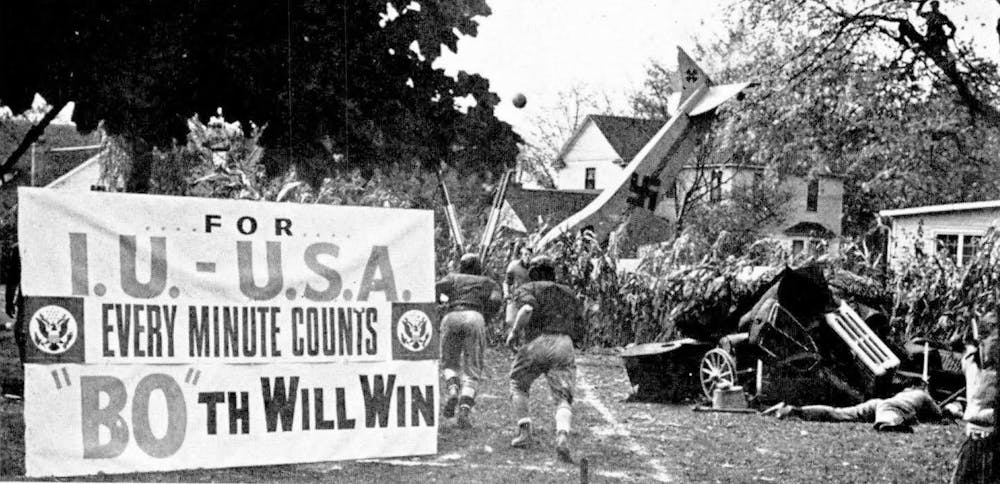Over eight decades ago, Indiana University underwent significant academic and campus transformations during World War II under President Herman B Wells, emerging as a crucial contributor to the war effort.
As international tensions escalated, IU took steps to prepare its students for military service. The Reserve Officers' Training Corps program saw increased enrollment and required two years of military training for every physically fit male student.
ROTC enrollment rose from 1,397 in fall 1937 to 1,705 in fall 1938. University students enrolled in medical and dental schools, aged 18 to 45, formed the Medical Corps and were exempt from military service.
IU offered specialized courses in radio operations and cryptography. The State Police Recruit School began teaching subjects like espionage, sabotage and subversive activities. The National Youth Administration offered a typing course because the military considered it valuable. By 1940, 1,232 IU students were registered for the draft.
Following the Pearl Harbor attack, the Indiana Daily Student published an extra edition to inform the campus community. From then on, the Union Building saw crowds gathering around radios to listen to war bulletins, with some students bringing portable radios to their classes.
For students mandated to enlist for military duty between Dec. 7 and the semester end, the university administration guaranteed full credit, provided they maintained passing grades.
In 1942, the university adopted a three-semester academic plan for students to graduate early, ensuring a steady supply of trained recruits.
The IU male student population plummeted from 3,580 in 1940 to 830 in 1944, a 75% decrease. The all-male University Band became evenly divided between male and female participants. Additionally, both the IDS and the Arbutus yearbook were predominantly operated by women at this time. Social activities such as dances and homecoming events were suspended.
By July 1942, North Hall became a makeshift vessel to accommodate 1,200 navy yeomen, transforming study rooms into cabins and repurposing facilities into a naval training hub. Insufficient facilities initially hindered housing for recruits, but creative solutions like bunk beds and repurposed storage spaces accommodated all 1200 yeomen. The housing challenges piled on due to increased program enrollments, especially among minority students, who were accommodated in private homes and fraternity housing.
In spring 1943, IU signed a contract with the US Army for the Army Specialized Training Program, necessitating further housing adjustments. However, a decline in fresh recruits led to the discontinuation of the Naval Training Station by June 1944 after training over 5,000 individuals.
Beyond military training, IU civilians contributed to the war effort through initiatives like Victory Gardens and volunteer work. Each weekend, hundreds of IU students, predominantly women, boarded buses for a 35-mile journey to the Crane Naval Ammunition Depot, where they sorted materials and replenished shell casings.
IU became the first university to enroll veterans into the Servicemen’s Readjustment Act of 1944, which provided veterans benefits such as low-cost mortgage rates and loan guarantees to purchase homes, loans to start new businesses, compensation for one year of unemployment and full coverage for educational tuition and living expenses.
In the fall 1945, returning veterans sparked significant growth at the university, with a total of 2,895 veterans enrolled by the end of the spring 1946 semester, and a projected enrollment of 4,200 veterans for the fall 1946 semester.
As the war wrapped up by October 1945, campus activities resumed and returning veterans brought new perspectives, enriching the university community and shaping its trajectory in the post-war era.




